What marketplace business model is right for you? Here, you learn how to choose the best business model for your business.
Build your online marketplace today!
Benefit from a 7-day free trial, with no obligation or payment card
What marketplace business model should you choose? After all, picking the wrong business model is one of the main reasons why businesses fail. If you want to learn exactly how to choose the best business model for your marketplace, read on.

Source: Pexels.com
Why is marketplace as a business model so attractive?
First: What makes a peer-to-peer, B2B, or B2C marketplace such an attractive business model?
Good question. The thing is: You want to make sure you’re working on the most lucrative business possible. And that’s exactly what a marketplace is.
What is a marketplace?
An online marketplace is a platform that facilitates transactions (monetary or based in another form of value) between users. The owner of a marketplace doesn’t own inventory. Instead, a marketplace owner provides the means for people to find each other and complete a transaction.
There are different types of marketplaces. You have peer to peer marketplaces, which enable transactions more generally between people (think, Airbnb as long as the renter is an individual and not a rental company). Then there are business-to-consumer marketplaces where consumers can find different businesses (like Amazon) and business to business marketplaces where businesses find each other (for example freelance marketplaces like Upwork).
Marketplace business model definition
In his talk on marketplaces, a16z general partner Jeff Jordan lists the reasons why marketplaces are superior to classic ecommerce and retail: identity, reputation, payments, trust and safety, and transparency.
When a marketplace achieves a level of growth, its value increases manyfold. This is because of the network effect, which means that the entire network is more valuable when more people use it because users benefit from each other. It’s much harder to compete with a business that has built a network rather than a traditional ecommerce supplier, which makes the marketplace position itself sort of like a monopoly in a niche or industry.
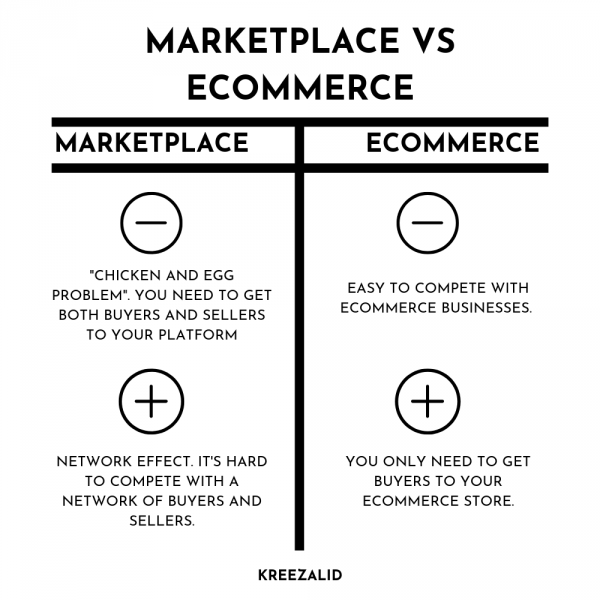
We’ve talked about finding your marketplace business model with a marketplace business model canvas. But what about your financial model? That’s what we’ll look at next.
The best financial model for marketplaces
How do you decide which financial model to pick for your marketplace? Your financial model must be scalable, while at the same time meeting customer demand. If you prioritize one over the other, your marketplace will likely fail. So how do you balance all of this? Let’s find out.
Commission
The first pricing model for marketplaces is a commission-based model.
Here, your marketplace makes money every time a transaction is made. You often get a certain percentage or amount based on the amount that is transferred. Commissions are usually the most lucrative revenue stream for marketplaces, especially as they grow and more and more transactions take place.
How much commission to charge
But how do you know how much to charge as a commission? And should you go for a percentage or a fixed commission? What you need to keep in mind is this:
- Your competition. Look at your competition. What commission do they take? This doesn’t necessarily determine your entire pricing structure, but it can give a good indication of what works in your niche and industry.
- Marginal cost. How much does it cost to produce one additional unit of a product or service? This does affect your commissions because if they are too high, the profit margin for sellers will simply be too low for them to have an incentive to continue using your marketplace platform. For example, Etsy, where people sell handmade and vintage items with a higher marginal cost, takes 5% as a transaction fee. Upwork, a freelance platform, charges between 10-20%.
- What works for your users. Finally, tweak your commission model if necessary. In the end, your commission depends on what works for your users.
How to fix platform leakage
One roadblock for marketplaces that use commission-based pricing is platform leakage. This means that users go around the platform to deal with each other directly, without your platform as the middle man.
Platform leakage happens when users don’t see enough value in your platform and perceive your commission as too high. For example, a freelancer on a freelance platform might contact a client directly outside of the platform if the commission is too high in comparison to the perceived value.
Fortunately, you as the marketplace owner can fix this. How? By giving the type of value that will make using your platform a no-brainer. Usually, this comes down to security and/or comfort.
Take home sitting marketplace TrustedHousesitters or house rental marketplace Airbnb. Both marketplaces have a need to make house owners feel secure on their platforms. That’s why TrustedHousesitters offers a 24/7 veterinary advice line so homeowners can be sure their pets are in safe hands, as well as insurance for damage to property. Airbnb offers insurance for up to $1 million, which includes third party claims.
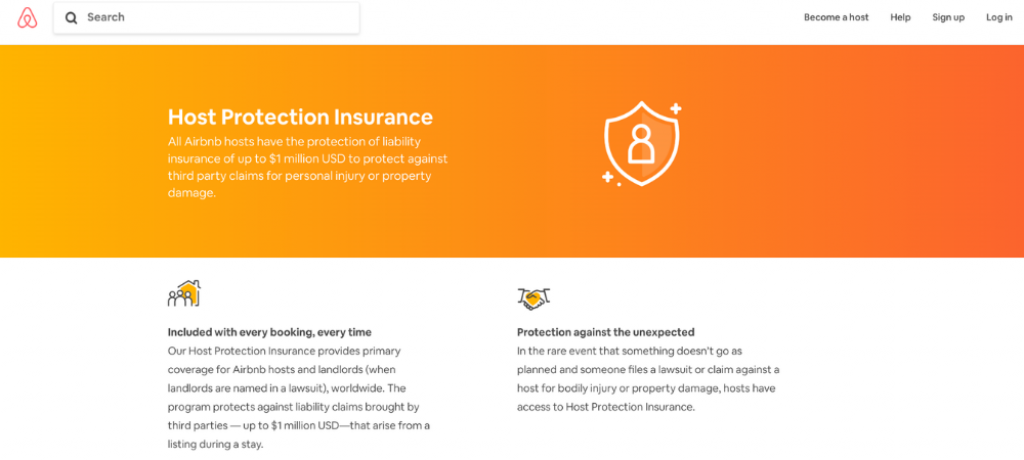
Alternatives to commissions as a pricing model
Note that commission as a pricing model doesn’t work for all types of marketplaces. If all transactions on your marketplace are free (think: a marketplace built on service exchanges like TrustedHousesitters), a commission won’t make much sense. In that case, another type of pricing model works best.
Plus, commissions are usually used together with another pricing model. For example, XXX.
Membership or subscription fee
If you use the membership or subscription fee pricing model, all or some of your users pay a monthly or yearly fee for using your platform. This model is perfect for platforms that provide high value (e.g. helps businesses find new clients), but where it’s hard to charge a commission.
Now, every marketplace has the “chicken and egg problem” to some extent, so how to find sellers without customers and vice versa. But with a membership pricing model, you’ll experience this even more. Without sellers or buyers, there simply isn’t enough value for people to be incentivized to pay the membership fee.
How do you solve this? When you first set up your marketplace, you can either offer a discount to your membership fee or completely waive the fee for people who sign up.
For example, TrustedHousesitters charges an annual membership fee. The incentive is that people can get access to house sitters or houses that need house sitting without limits.
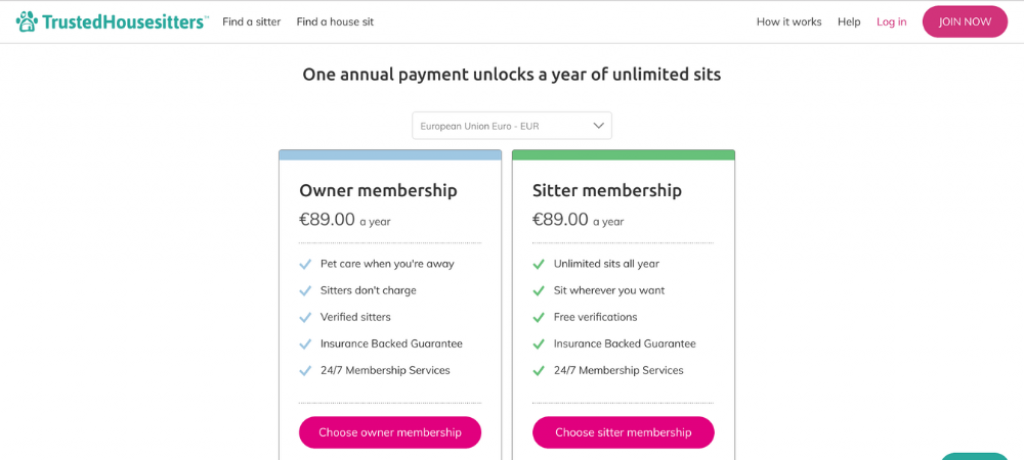
Listing fee
With a listing fee, people pay for listing their products or services on a platform. Listing fees are most commonly used when listings are valuable for the seller or service provider.
For example, Craigslist has built its pricing model around listing fees. And a lot of marketplaces tend to use a mix of listing fees and commissions. For example, Etsy charges both a commission (5%) and a listing fee ($0.20).
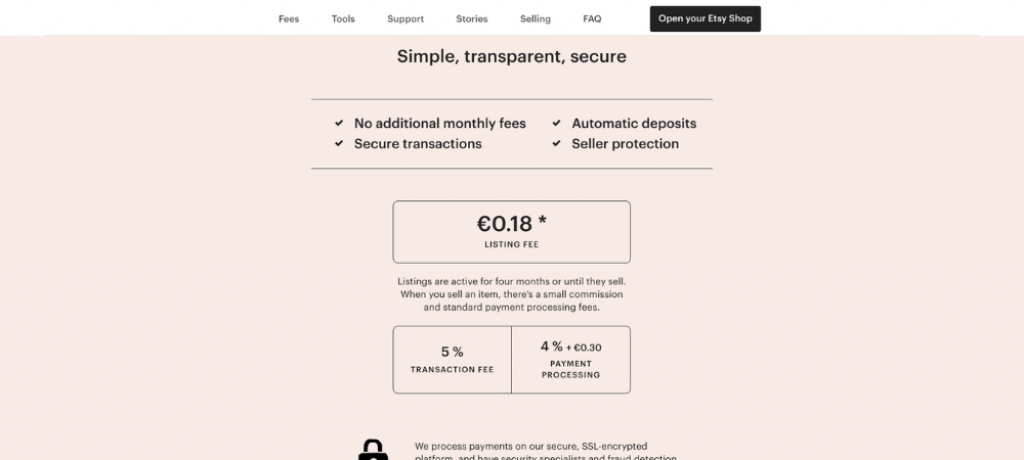
The problem with using only listing fees is that you don’t get paid for the value of an item, but your listing fee can only be so high. You ultimately need a lot of listings to get enough revenue.
Lead fee
Lead fee means that you ask for a commission for specific leads (rather than when a transaction is completed). For example, this could be by having leads come to your site and sellers pay in order to bid to these leads. Most commonly, B2B marketplace platforms, and potentially B2C service platforms, use this pricing model. One of the pricing models Upwork uses is a lead fee for freelancers who bid for a job.
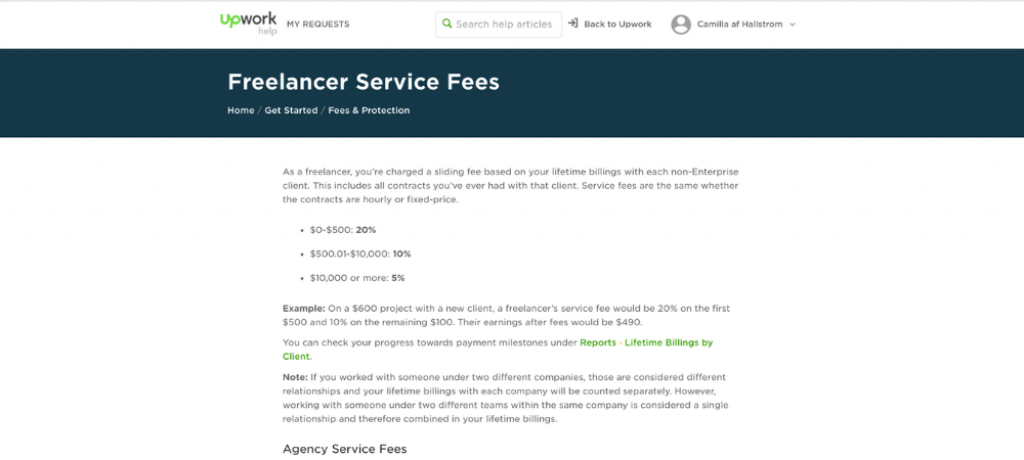
Freemium
If your marketplace is a place where people share products or services for free, you’ll need to be a bit more creative in how you monetize your platform. One way is to offer premium services. For example, a premium account might give people access to things like insurance, customer support, and other perks.
Your premium services need to be tempting enough for a portion of your users to be sustainable and scalable. Often, offering exclusively premium services won’t be scalable enough as you need staff to manage premium services. That’s why you might need to combine a freemium model with another pricing model, such as featured listings.
Featured listings and ads
With featured listings and ads, you make it possible for sellers to buy more visibility for their listing. For example, their listings might get higher up in searches or appear as the first search listing. Sites like Yelp use this pricing model.
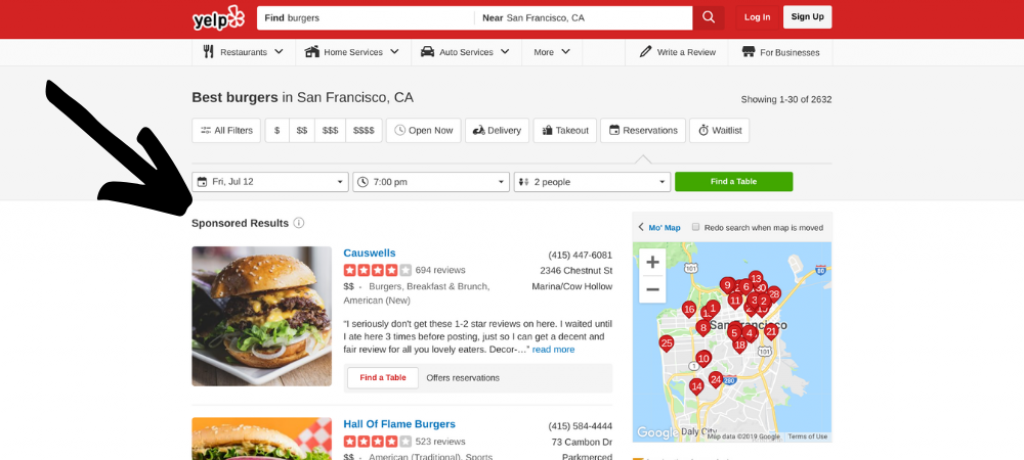
Usually, featured listings and ads are used when it’s free to use a site, but to stand out, users need to pay. In order to make this model sustainable, you need a good amount of users.
Want to get started building a profitable marketplace business today?
There you have it. Now you know which marketplace business models there are and which one to choose for a profitable marketplace business. In the end, commission together with another pricing model works great for most types of marketplaces.
To build a successful marketplace, you also need a powerful and easy to use marketplace platform. And to help you find the best platform, we made it free for you to try Kreezalid for 14 days. Click here to sign up!

